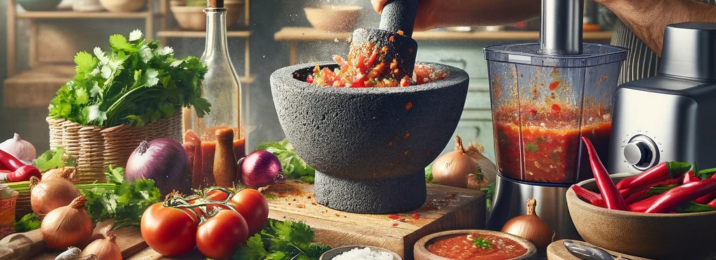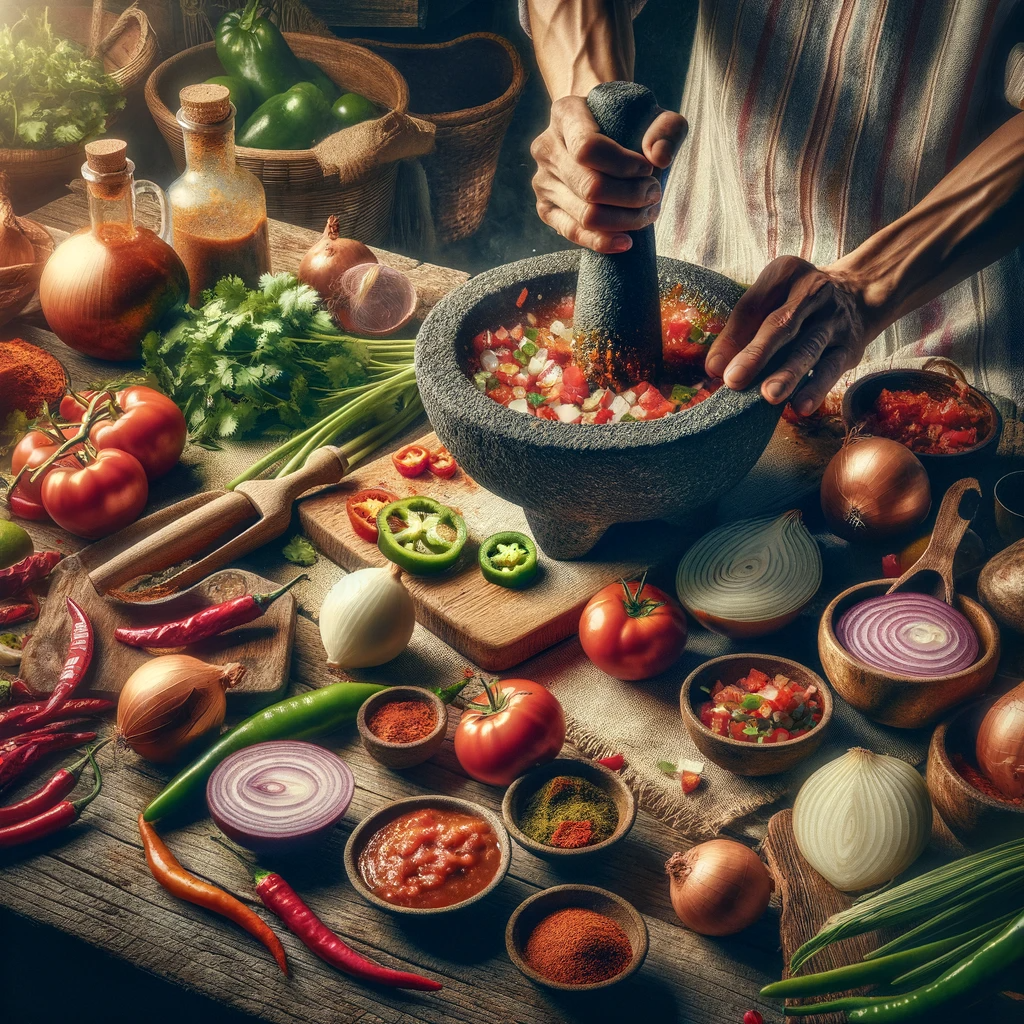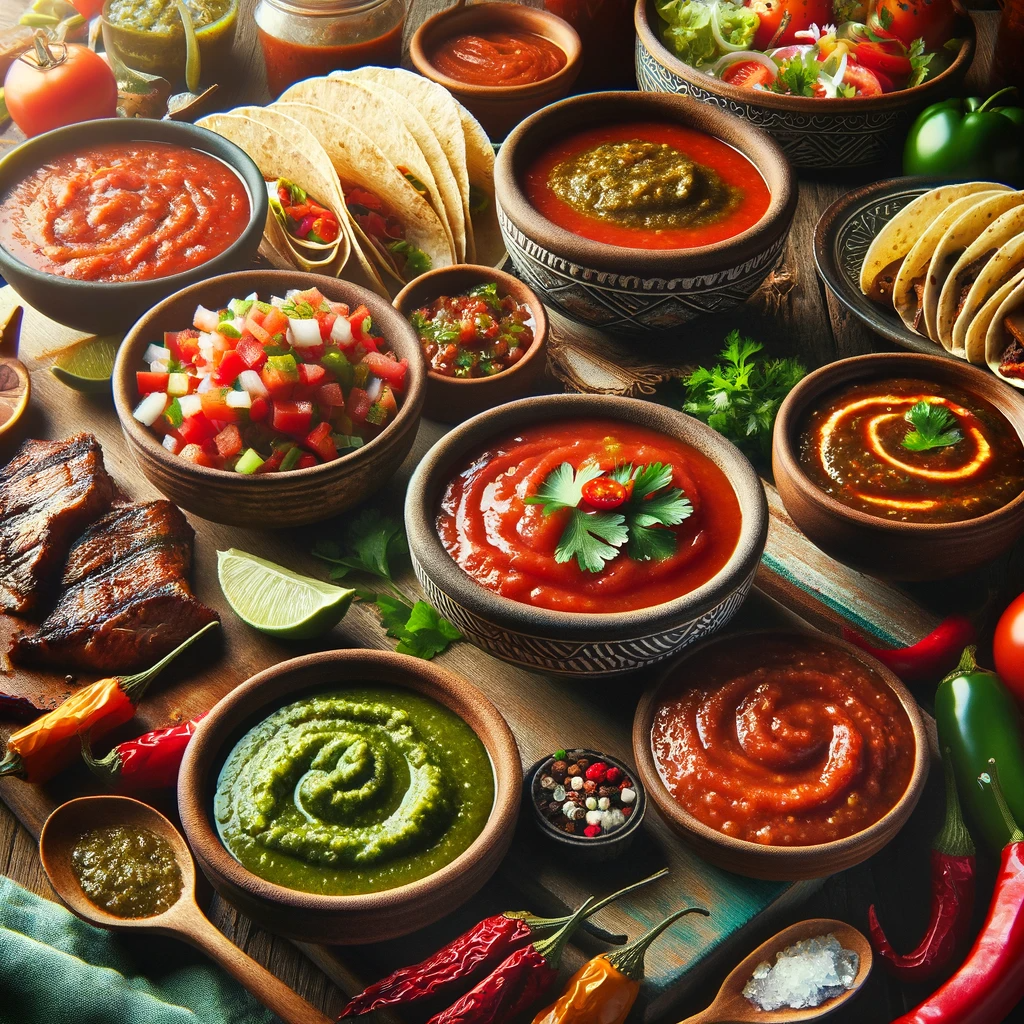The Art of Making Homemade Mexican Salsas
Homemade Mexican salsas are a vibrant celebration of flavor, embodying the rich cultural tapestry of Mexico’s culinary heritage. With their bold combinations of fresh ingredients and intricate balance of spices, these salsas are not just condiments but the soul of Mexican cuisine. As an award-winning investigative journalist and SEO expert, I have delved into the world of Mexican salsas to bring you an original and comprehensive guide that will inspire your cooking and tantalize your taste buds.
The Cultural Significance of Mexican Salsas
Mexican salsas are more than mere accompaniments; they are a cultural cornerstone, deeply rooted in history and tradition. Originating from ancient Mesoamerican civilizations, salsas have evolved through centuries, with each region in Mexico crafting its unique variations that reflect local tastes and ingredients.
The Foundation of Salsa: Ingredients and Techniques
Fresh Ingredients: The Heart of Salsa
The best salsas start with the freshest ingredients. Ripe tomatoes, aromatic herbs like cilantro, pungent onions, and a variety of chilies form the backbone of most recipes. The choice of chili, from the smoky chipotle to the fiery habanero, defines the salsa’s heat level and flavor profile.
Roasting and Charring: A Flavorful Tradition
Roasting vegetables is a traditional technique that intensifies the flavors in salsa. This method caramelizes the natural sugars in tomatoes and chilies, adding a depth of taste that raw ingredients alone cannot achieve.
The Molcajete: A Culinary Artifact
The molcajete, a stone mortar and pestle, is the traditional tool for making salsa. It crushes the ingredients, releasing their essential oils and blending their flavors in a way that modern appliances cannot replicate.
Regional Variations: A Mosaic of Flavors
Salsa Roja and Salsa Verde: The Classics
Salsa Roja, made with red tomatoes, and Salsa Verde, made with green tomatillos, are the quintessential Mexican salsas. Each region has its twist on these classics, adding ingredients like roasted garlic or fresh lime juice to create a signature flavor.
Pico de Gallo: The Fresh Alternative
Pico de Gallo, also known as Salsa Fresca, is a chunky mix of raw tomatoes, onions, cilantro, and chilies. It’s a refreshing counterpart to the more complex, cooked salsas and is perfect for topping tacos or eating with chips.
Mole: The Complex Salsa
Mole is a rich, complex sauce that can be considered a type of salsa. It combines chilies with unexpected ingredients like chocolate and nuts, resulting in a deeply flavorful and aromatic condiment.
The Art of Balance: Crafting the Perfect Salsa
Creating the perfect salsa is an art that requires balancing acidity, heat, sweetness, and texture. Lime juice or vinegar adds brightness, while salt enhances the natural flavors of the ingredients. The key is to adjust these elements until the desired harmony is achieved.
Salsa as a Healthful Addition
Not only are salsas delicious, but they are also packed with vitamins and antioxidants. Fresh ingredients like tomatoes and chilies contribute to a healthy diet, making salsa a guilt-free addition to any meal.
The Global Journey of Salsa
Salsa has transcended its Mexican origins to become a global phenomenon. It’s a testament to the universal appeal of its bold flavors and the ease with which it can be adapted to suit different palates.
Salsa-Making Tips and Tricks
The Right Equipment
While a molcajete is traditional, a blender or food processor can also be used to achieve the desired consistency, whether you prefer your salsa chunky or smooth.
Handling Chilies
When working with chilies, always wear gloves to protect your skin from irritation, and be cautious with the seeds and veins if you prefer a milder salsa.
Storing Your Salsa
Homemade salsa can be stored in the refrigerator for up to a week, allowing the flavors to meld and develop over time.
Pairing Salsas with Food
Salsas are incredibly versatile and can be paired with a wide range of dishes, from classic Mexican fare like tacos and enchiladas to grilled meats and seafood.
FAQs About Homemade Mexican Salsas
Q: What is the best tomato for making salsa?
A: For a rich and flavorful salsa, use meaty tomato varieties like plum, roma, or vine-ripe tomatoes. Avoid watery types like cherry or grape tomatoes.
Q: Can salsa be made with canned tomatoes?
A: Yes, canned tomatoes can be used, especially when fresh ones are not in season. Canned fire-roasted tomatoes are a great option for added depth of flavor.
Q: How spicy should my salsa be?
A: The spiciness of salsa is subjective and should be tailored to your taste. Remove the seeds and veins from chilies for a milder salsa, or leave them in for more heat.
Q: Is it necessary to cook the ingredients before making salsa?
A: While not always necessary, charring or roasting ingredients like tomatoes and chilies can enhance the flavor of your salsa, giving it a smoky depth.
Q: What’s the difference between salsa and pico de gallo?
A: Salsa is generally a blend of cooked or raw ingredients that can be smooth or chunky, while pico de gallo is a type of salsa made with raw, chopped ingredients for a fresh and crisp texture.








